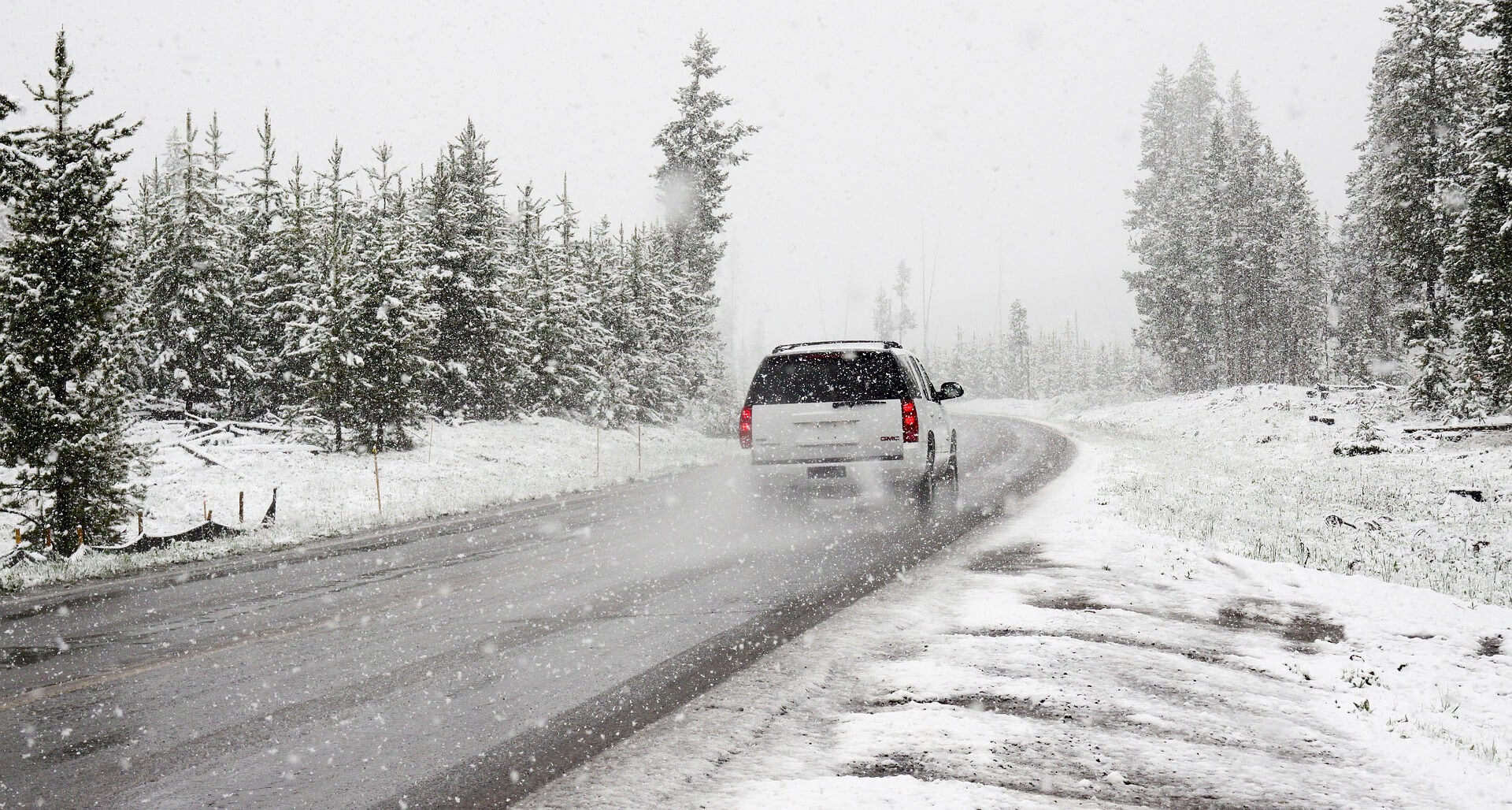- Home
- Practice Areas
- Car Accidents
- Truck Accidents
- Motorcycle Accidents
- Bus Accidents
- Drunk Driving Accidents
- No Fault & Uninsured Motorist
- Pedestrian & Bicycle Accidents
- Boating Accidents
- Dog Bites
- Swimming Pool Accidents
- Back & Spinal Cord Injury
- Head & Brain Injuries
- Fractures, Sprains & Soft Tissue Injuries
- Passenger Injuries
- Wrongful Death
- View All
- Practice Areas
- Attorneys
- Attorneys
- About Us
- Testimonials
- Settlements
- About
- Blog
- Contact Us
8 Life-Saving Tips While Driving in The Snow



- Home
- Blog
- Car Accident
- 8 Life-Saving Tips While Driving in The Snow
The state of Michigan averages more than 60 inches of snowfall each year, but experts predict there will be even more snow this year! The Farmer’s Almanac agrees, indicating Michigan will be “unreasonably cold [and] snowy”.
Driving in the snow can be very dangerous. Fourteen percent of crashes that occurred between 2015 and 2019 were attributed to winter weather, according to data from the Michigan state police.
We have collected eight life-saving tips for driving in the snow to help you reduce your risk of being involved in a weather-related motor vehicle crash. However, we understand that accidents happen. If at any point another motor vehicle hits you this winter, Matz Injury Law will be here to help. Call our law office today at 1-866-22Not33.
Experts Have a Lot to Say About 2022-2023 Michigan Weather Predictions
As several media outlets are reporting, Michigan will have greater than average snowfall, with potential light snow for the first time beginning as early November arrives. It is also highly possible we will experience lower-than-average temperatures here in The Great Lakes State.
If these kinds of winter conditions materialize, get ready to start wearing your warm clothes, dig out the ice scraper, fire up those snow plows, and familiarize yourself with the following winter driving tips.
8 Tips for Driving in the Snow You Need to Know
To stay safe while driving in snowy conditions or on slippery roads, it is a good idea to take some precautionary measures, along with following good driving practices for wintry weather.
1. Prepare Your Vehicle
Make sure all your car parts, including your brakes, windshield wipers, defroster, heater, tires, and exhaust system, are in top working order before the first snowfall. This way, you are fully prepared for winter driving and significantly reduce the chance of an accident.
To further reduce the chance of sliding on a snowy surface, plan to equip your car with chains or snow tires. Purchasing winter tires increases your ability to complete a smooth and safe stop because you will have strengthened tire traction. Be sure your tires have enough traction left on them because, even on dry roads, the reduced tread can cause a car to slip.
2. Drive Slowly
A car cannot stop instantly on wet or slippery surfaces; it takes a moment for the tires to grip the surface of the snow. Driving more slowly gives you better vehicle control if you must stop unexpectedly. To account for this, when driving on snow or icy surfaces, always adjust your speed to account for reduced traction. When driving in the snow, plan to reduce your speed by roughly 50%. For instance, if the speed limit is 40 mph, plan to drop your speed to 20 mph.
3. Steer into a Skid if You Lose Control
If you start to slide, steer into the skid to maintain better control of your vehicle. Do not slam on your breaks. To steer into the skid, take your foot off the gas or brake and gently turn your steering wheel in the direction your motor vehicle is skidding toward. As your car begins to correct itself, sometimes you may need to spin your wheel in the opposite direction — this will help get your vehicle corrected and back in the direction you are traveling.
4. Increase Your Following Distance
In the cold weather months where wet, snowy, or icy conditions exist, leave more space than usual between you and any other cars on the road. When you increase your following distance, it will substantially decrease the chances of getting into an accident. Keeping a consistent slower speed while staying about seven to eight seconds behind the vehicle in front of you gives you a better ability to avoid crashing into a vehicle from behind.
5. Do Not Power Up Hills
You should avoid driving up hills in inclement weather wherever possible. However, sometimes it is impossible to avoid. If you do encounter a situation where you need to get over a hill on the roadway you are traveling, do not power up by applying more gas while on the hill; this will result in wheels spinning and getting you nowhere. Instead, start to slowly accelerate to get some engine power before you get to the hill.
6. Do Not Accelerate if You Get Stuck
If you do get stuck, do not accelerate your vehicle. This attempt could shift your vehicle in an unexpected direction and put yourself, your passengers, and other motorists in danger. Alternative options include keeping a bag of cat litter in your truck or a long piece of cardboard to slip in front of your tire to help get your vehicle unstuck. Also, stow a small shovel in your car to move excess snow away from your tires.
People often mistakenly assume that since they have front-wheel or all-wheel drive, they do not have to be as cautious in inclement driving conditions. While it’s true rear wheel drive is less helpful on snow-covered roads, it does not mean all-wheel or four-wheel drive is infallible. Bottom line, all vehicles are susceptible to black ice and snowy roads. No one is invincible.
7. Practice Threshold Braking
Threshold braking takes plenty of practice to get the skills needed to master this technique. How it works is the driver learns the “art of slowing down in the quickest possible way” by keeping the car’s brake force at “the optimum level.” Be mindful of how you push on your brake pedal. While anti-lock brakes are very helpful during normal road conditions, in a snowstorm, or in other adverse weather conditions, the old-school method of braking gives a driver more control and is more of a preventive approach than the ABS-reactive one.
8. Watch out for Light Snow, Too!
Subfreezing temperatures can refreeze the snowmelt and create black ice. That’s why you see so many accidents in the Southeast during snowfall — the weather is more unpredictable and people are less accustomed to frigid winter months and icy roads. For instance, in mid-Atlantic states, it is not uncommon for the weather to drop three inches of snow, only to melt the next day with warmer temperatures and then refreeze once the sun sets, leaving hazardous black ice and other slippery conditions.
Injured From a Winter Weather Accident? Matz Injury Law Can Help.
Driving in the snow for the first time can be intimidating, but once you learn good safety procedures and get used to putting them into safe driving practice, you significantly decrease your chances of getting into a winter-related accident.
Matz Injury Law has been practicing law in Michigan for decades and is thoroughly familiar with all motor vehicle laws. Over the course of time, we have seen countless injuries caused by winter weather, and we are very familiar with all of the tricks insurance companies use to get out of paying you.
Our attorneys represent clients throughout Michigan in injury-specific cases. Our law firm has logged hundreds of thousands of miles to virtually every county in both upper and lower Michigan to meet with clients. To date, we have recovered more than $300 million for them. Furthermore, with our low contingency fee (22%, not the industry norm of 33%), more money can go toward your recovery.
As a premier law firm in the state of Michigan, Matz Injury Law is here for you, always. To obtain a free consultation, contact us at 1-866-22Not33 or by reaching out to us through our convenient online contact form.

Written By Steven Matz
Steven J. Matz is a founding shareholder of Matz Injury Law. The firm’s concentration is on personal injury litigation, with an emphasis on traumatic brain injury.
Speak To an Attorney
"*" indicates required fields







The maximum contingency fee permitted by law is actually 331/3%. Michigan court rules require that the attorney fee be computed on the net sum recovered after deducting all disbursements properly chargeable to the enforcement of the claim.
We can charge 22% while virtually all other injury attorneys charge 331/3% because we are very, very, good at obtaining results for our clients.
We do not spend millions of dollars on television ads; instead, we offer a lower fee to all our clients. We do not have dozens of lower paid associates handling our work. All our clients are represented by Steven and Jared Matz. Steven Matz started the firm in 1977 and since then has dedicated his life to representing injury victims. Jared joined the firm in 2016 but grew up listening to stories, discussing theories, and generally learning at the dinner table about how to effectively and compassionately represent injury victims. Jared Matz was literally born to represent individuals involved in motor vehicle crashes.
All of our cases are handled on a contingency fee and all our cases are handled at 22%. Whether the case settles or goes through trial, the fee does not change. While our competitors make excuses as to why they charge so much, we are obtaining results for our clients at a lower fee.
At a typical television advertising law firm, your first call will be handled by a receptionist, who may refer you to an intake person, who will discuss your claim with an intake manager, who then discusses your claim with an associate, who may then report to a partner. You may never speak with the person whose name is at the top of the letterhead. At Matz Injury Law you will always speak with either Steven Matz or Jared Matz.

© 2024 Matz Injury Law

